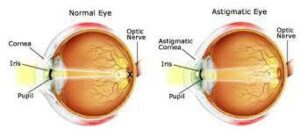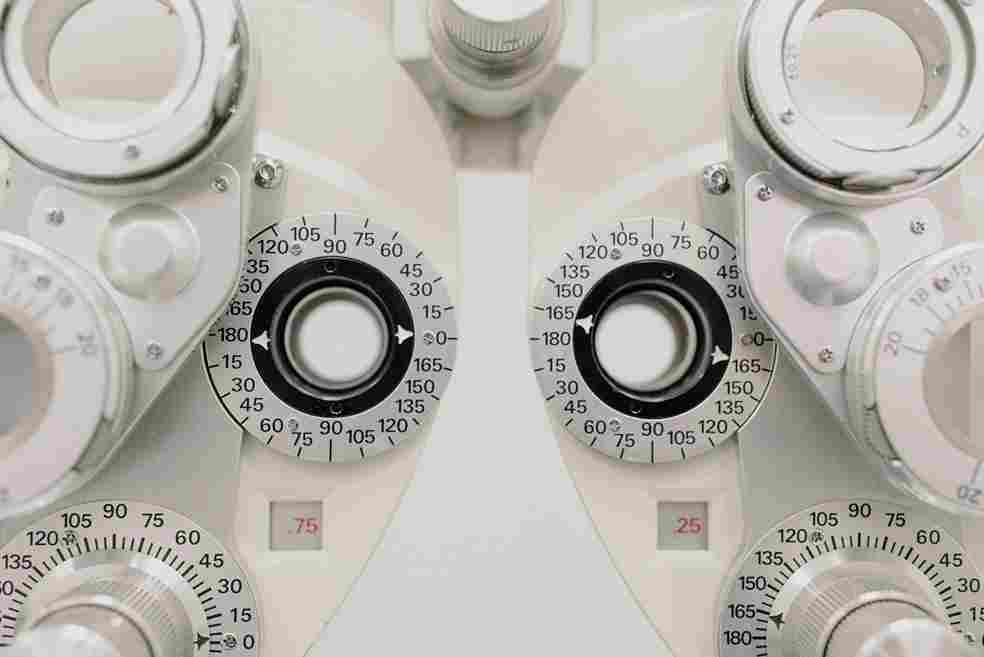If you are one of the millions of people who have undergone Lasik surgery, you may be wondering how to correct astigmatism after Lasik. This is a common question, and there are several methods that can be used to achieve successful results. In this blog post, we will discuss the most popular methods for correcting astigmatism after Lasik and provide some tips on how to ensure successful treatment.
Contents
What Is Astigmatism?

Astigmatism is a condition in which the eye does not focus light evenly on the retina, resulting in blurred vision. It is usually caused by an irregular shape of the cornea, the clear front surface of the eye. Astigmatism can occur in combination with nearsightedness or farsightedness and can make both distance and close-up vision blurry.
It is not uncommon for patients to experience some degree of astigmatism after Lasik surgery. In fact, many people actually have pre-existing astigmatism that is simply corrected during the Lasik procedure. However, there are also those who develop this condition after the surgery has been completed.
Can You Develop Astigmatism After Lasik?
It’s possible to develop astigmatism after Lasik surgery, but it’s not common. According to the Council, less than five percent of people who have Lasik develop some degree of astigmatism. LASIK is a type of refractive surgery that is used to correct astigmatism.
During LASIK, the surgeon creates a flap in the cornea and then uses a laser to reshape the underlying tissue. This helps to improve the way that light enters the eye and is then focused on the retina.
There are two ways that you can develop astigmatism after Lasik. The first is called regression. This is when your eyes heal and start to change shape slightly. The second way is called decentration. This is when the Lasik surgeon cuts the cornea in the wrong place or at an angle that’s too steep.
If you have astigmatism after Lasik, there are numerous ways to correct this condition. So, find ways that suit your condition.
How To Correct Astigmatism After Lasik?

Astigmatism is a common condition that affects many people who have had LASIK. In most cases, it can be corrected with a simple laser treatment. However, in some cases, astigmatism may persist after LASIK and additional surgery may be needed to correct it. Here are two types of astigmatism that impact the treatment.
For example, if you have mild astigmatism, your vision can be corrected with eyeglasses, contact lenses, or refractive surgery. On the other hand, in moderate to severe astigmatism, your doctor may recommend limbal relaxing incisions or conductive keratoplasty in addition to or instead of these options.
Limbal relaxing incisions
Limbal relaxing incisions (LRI) are made in the peripheral cornea to flatten the steepest part of the cornea and reduce astigmatism. This type of surgery is usually combined with LASIK or another type of refractive surgery.
Conductive keratoplasty
Conductive keratoplasty (CK) uses radio waves to heat and shrink collagen fibers in the peripheral cornea. This procedure can also be combined with LASIK or another type of refractive surgery.
Both of these procedures are usually performed on an outpatient basis and take only a few minutes to complete. Recovery time is typically short, and most people experience little to no discomfort after the surgery.
Contact lenses
Astigmatism can also be corrected with special contact lenses or eyeglasses. Toric contact lenses are designed to correct astigmatism, while multifocal contact lenses can correct both nearsightedness and farsightedness as well as astigmatism. There are also special types of eyeglasses that can correct astigmatism.
Refractive surgery
This type of surgery is used to improve the way the eye focuses light. It can be used to treat nearsightedness, farsightedness, and astigmatism. The most common type of refractive surgery is LASIK (laser-assisted in situ keratomileuses).
Eyeglasses
The most common corrective treatment for astigmatism is eyeglasses. Depending on the degree of the condition, eyeglasses may be only a part-time solution or a full-time one.
There are two types of eyeglasses that can be used to correct astigmatism:
- Single-vision glasses have one power in each lens. This type of eyeglass is used to correct nearsightedness, farsightedness, or astigmatism in one eye.
- Bifocals have two powers in each lens—one for distance vision and the other for near vision. Bifocals are used to correct both nearsightedness and presbyopia (a condition that causes you to lose the ability to focus on close objects as you age).
Contact lenses
Like eyeglasses, contact lenses can also be used to correct astigmatism. Astigmatism can also be corrected with special contact lenses or eyeglasses. Toric contact lenses are designed to correct astigmatism, while multifocal contact lenses can correct both nearsightedness and farsightedness as well as astigmatism. There are two types of contact lenses that can be used for this purpose:
- Soft contact lenses are made of gel-like materials that contain water. They are usually comfortable to wear and can be easily removed.
- Gas-permeable contact lenses are made of rigid, oxygen-permeable materials. They may take some time to get used to, but they provide a clear vision.
Corneal reshaping
Also known as orthokeratology, corneal reshaping is a non-surgical procedure that can be used to correct mild to moderate degrees of astigmatism. In this procedure, the cornea is gently reshaped using specially designed contact lenses. These lenses are worn overnight and removed during the day.
If you have mild astigmatism, chances are you won’t even notice it. But if your astigmatism is more severe, it can cause headaches, eye fatigue, and trouble seeing clearly at both near and far distances. If you’re having these symptoms, talk to your doctor about treatment options. With today’s advances in vision correction, there’s no reason to suffer from astigmatism.
How Long Does Astigmatism After Lasik Last?
Most people have some degree of astigmatism, but for many, it is so mild that it does not require treatment. For people with more severe astigmatism, corrective lenses or surgery may be necessary.
Schedule a follow-up assessment with your doctor 24 to 48 hours after having LASIK surgery. This will allow them to ensure that the healing process is proceeding as planned and detect any issues early on before they become more serious problems.
If you develop astigmatism after surgery, you may benefit from having additional LASIK surgery (known as an enhancement).10 However, you will likely have to wait until you have fully recovered from your first surgery – usually 3 to 6 months – before undergoing another one.
Most people experience some degree of astigmatism after LASIK surgery. This is because the eye is still healing and adjusting to its new shape. Astigmatism after LASIK typically improves within the first few months after surgery, but it may take up to a year for the full effects to be seen. In some cases, glasses or contact lenses may be needed for a period of time after surgery to help with vision.
If you are considering LASIK surgery, it is important to talk to your eye doctor about the risks and benefits. LASIK is generally safe and effective, but like all surgeries, there are some potential risks and complications. Be sure to ask your doctor about what you can expect before, during, and after the procedure.
Conclusion
It may be concluded that astigmatism after Lasik can be corrected effectively with a few different treatments. The best way to correct this condition may depend on the individual’s situation. Some people may only require glasses or contact lenses, while others may need surgery. In any case, it is important to consult with an ophthalmologist to determine the best course of treatment.
If you want to know more about this option, please contact Eye Mantra. This platform offers the most advanced surgical options for your eyes including PRK, Femto Lasik, SMILE surgery, Standard LASIK, and Contoura vision. If you have any questions on LASIK surgery, LASIK surgery cost, and LASIK procedure, call us at +91-9711116605 or email at eyemantra1@gmail.com.


